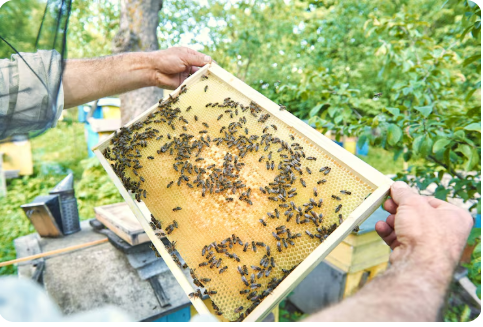When a honey bee colony establishes a hive inside a residential or commercial structure, it presents a serious concern for safety and property damage.
Attempting to manage a bee infestation with do-it-yourself methods is dangerous and often results in an incomplete removal, leading to a recurrence of the problem. Choosing a qualified professional is the only way to ensure the job is done safely, effectively, and often humanely.
This decision requires careful evaluation of several key factors to protect your home and the valuable pollinator population.
Licensing and Insurance Verification
The first and most critical step in hiring a service for honey bee removal is to verify their credentials. You must ensure the company holds the necessary licenses for pest control or contractor work in your area. Beyond licensing, comprehensive insurance is non-negotiable.
Ask for proof of both general liability insurance and worker’s compensation insurance. This coverage protects you from financial responsibility should an accident occur on your property, such as a technician being injured or property damage resulting from the removal process. Without proper insurance, a disastrous mistake could fall entirely on the homeowner.
Bee Removal Method and Philosophy
The approach a company takes to remove bees is a significant consideration. Environmentally conscious homeowners should seek out services that specialise in live honey bee removal and relocation.
These companies, often run by or connected to beekeepers, use gentle methods like specialised vacuums to collect the bees alive and transport them to a safe apiary.
By contrast, some pest control operators use pesticides to eradicate the colony. Always ask directly if the company kills the bees or relocates them. Choosing humane relocation supports the essential role of bees in the ecosystem.
Experience and Expertise
Bee removal from a structure, such as a wall void or chimney, is complex and requires specific expertise. Look for companies with a long track history of success, especially with structural removals.
Ask how many removals of this specific type the technicians have performed and what percentage of those were successful.
An experienced professional possesses the knowledge to accurately identify the bee species, locate the full extent of the hive—which may be hidden deep within the building—and determine the safest time for the operation.
Hive and Honeycomb Removal
Bees build large combs that contain honey, which can weigh many pounds. If the bees are killed and the honeycomb is left inside the wall, the honey will eventually melt. This leaking honey can cause significant structural damage, stain drywall, and attract other pests like ants and rodents.
A complete honey bee removal service must include the meticulous removal of all honeycomb and residual honey, followed by a thorough cleaning of the cavity. Clarify that this critical step is included in their service quote.
Structural Repair and Prevention
The process of accessing a hive located inside a structure often requires the creation of an opening in a wall, roof, or fascia. A comprehensive service should include or coordinate the necessary repair work to seal the opening after the removal is complete.
Furthermore, the final step should involve “bee-proofing”—sealing all potential entry points to prevent future colonies from occupying the same spot. This preventative measure is vital for long-term protection of your property.









